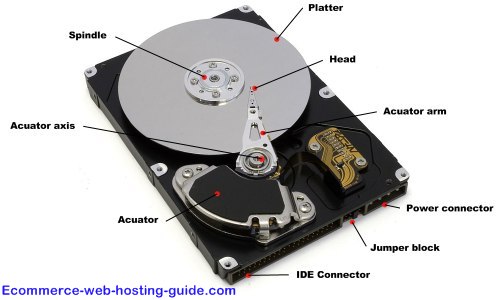Now let us move on to why and how the binary system is implemented in electronics. As was said before, binary is the basic "language"
of electronics. For those not farmiliar with programming, when a programmer writes the instructions for what an electronic device does, everything is in a form of binary. The
different languages you hear about such as java, C++, and the like are human made programs that make it easier for humans to write the instructions instead of having to type long
strings of 1's and 0's which would be confusing and would take a very long time. As an electronic device does not have eyes or the ability to process information like our brain does,
the 1's and 0's we defined have to be represented by something that can be easily sensed and processed through logic gates by the device. That something is voltage, a certain amount
of voltage tells the computer that is a 1, and no voltage represents a 0 which are detected reliably by sensors and easy to produce.
 An example of what the insides of a clock could look like. 1's and 0's are sent across to all the different parts in combinations to make the clock work. Source: http://www.ttlclock.com/
If that's the case, why can't we have just used the decimal system? We could have easily have had 9 volts for 9, 8 volts for 8, and so on. So why don't we?
Idealistically, it would, but in reality, circuits degrade over time. This system would work for the first while, but soon, unless constant mainteance is done and parts are replaced,
the voltage produced will decay and become unreliable. Soon 5 volts will become 4.8 volts... and then 4.5 volts and then all of a sudden a 5 becomes a 4 and the whole system screws up.
On top of this, a perfect constant voltage can never be created due to "noise" which will cause minor fluctuations so that you can't have devices that run on a small voltage because
splitting 1 volt in to 10 parts will make the boundaries between each division so small that sometimes a large enough fluctuation will cause ambiguity between the numbers. Therefore the
simpliest and best way is to use the binary system.
Technicalities aside, let us move on to the measurement of data. As you may know, hard drive storage size is measured in bytes, but what
does it mean? A single 1 or 0 is a bit. There are 8 bits in a byte, a 1000 bytes in a kilobyte, 1000 kilobytes in a megabyte... and so on. Therefore in a terabyte hard drive, there are
8 trillion 1's or 0's stored within it. That's a lot! So when a game takes 3 gigabytes of space, that is 24 billion 1's and 0's in binary of "instructions" that piece together the graphics
of the game, what the things do when a button is pressed, and everything related to the game. For example, the left arrow key is pressed, which sends a certain signal say 101010, which
is picked up by the computer, finds out what it needs to do when that signal is picked up, and executes it.
 A diagram of a hard drive. Source:
http://www.ecommerce-web-hosting-guide.com/what-is-a-hard-drive.html
What exactly is a hard drive though? To analyze this question, we must first look at the insides of a hard drive. We will focus on a few
main parts, the read head, the write head, and the "disks". There are many other parts in a hard drive that are for safety and making sure that the data isn't easily lost, but
that can be for you to research yourself. Starting off with the platters, these disks are composed of ferromagentic specks, each speck representing a bit of data. So in a gigabyte hard
drive, there are 8 billion specks on those disks. Each hard drive usually has 2-4 disks, which are manipulated by spindles that rotate these disks to the desired position. The rotation
is what causes the whirling sound you may hear from hard drives. The disks are rotated so that the read and write head don't have to move, as it is much easier to spin a disk really fast
rather than moving an "arm" very fast and precisely as well. The write head is a very small solenoid, and the computer tells the hard drive where to spin the disk to the desired part,
sends minute currents at ultra fast speeds (nanoseconds!) to the solenoid to store the data. The computer then keeps a record of where this is stored, so that it won't overwrite it by
accident. The read head uses technology called the giantmagnetoresistance effect to pick up the minute magnetic fields given off by the specks with amazing accuracy. Basically, the
read head is made in such a way that, when it passes through a magnetic field, it's resistance will change. For example, if the read head passes by a south polarity magnetic field,
it's resistance goes up, no electron will be transmitted to the computer and then the computer will know that a 0 was written there. Similarly, if the read head passes by a north
polarity, it's resistance will decrease dramatically, allowing electrons to go through, telling the computer that it is a 1.
|

